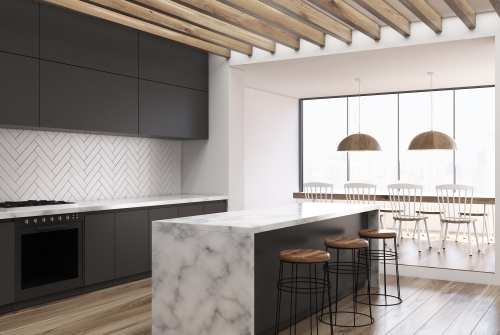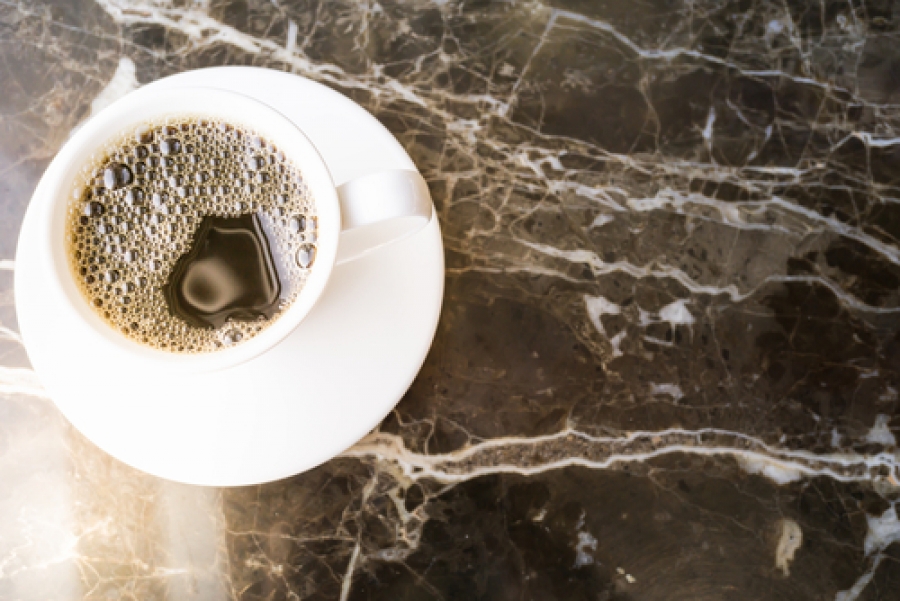A type of highly-pressurized rock, Marble is commonly used for sculpture and building material due to the famed abstract beauty of its white form. It is also known to be softer than most rocks, making it easier to carve and more resistant to shattering.
People usually use marble for kitchen countertops because of no other reason than how it looks. Because marble is relatively expensive compared to other materials used in interior design, people find it best to ask help from professionals; some, like Euro Marble, are available online.
Dreaming of that kitchen renovation? Before you get started on your countertops, here’s everything you need to know about marble:

Color
If you’re into clean and sophisticated design, you’re lucky that white is the most famous and most used color of marble. Some pieces are actually so white that they’re used for pigments. Choose the right kind of white that you want because the brightness and dullness of the color can vary significantly from slab to slab.
If white is too sterile for your taste, other marble colors include:
- Crema Marfil, Taupe - If you want a warmer, more natural color, you can try crema marfil, a creamier white color. You can also try a darker variation called taupe.
- Black - Black marble exudes elegance and royalty.
- Red - In design, red radiates strength and power, even in marble.
- Pink - If you want a rare color, pink is the one to choose. Pink marble is only available in certain parts of the globe, so it’s relatively more expensive.
- Multiple colors - Multi-colored marble usually goes with cream, brown, and black colors. Choose this if you want versatility in design.
Veins
The veins of the stone are what sets marble apart from the rest. Designers say that buyers must select slabs that, when merged, will look like an artistic painting. Take note of shapes and patterns and adjust them to your countertop dimensions. It’s wise to analyze marble veins by knowing the different kinds of cuts.
Cuts
Where the ends meet is also an important consideration when it comes to marble slabs. A “break” between two slabs in the middle of your countertops will look horrible. Be knowledgeable about the different ways your marble slabs can be “cut” and try to arrange the slabs to form continuous veins.
There are two common types of marble cuts. Both provide the same strength and durability; they just differ in how they look:
- Cross cut - The cross cut, which is also called the Fleuri cut, is done by cutting the slabs at a slant perpendicular to the natural bedding, usually at a 90-degree angle. This type of cut will bring out the gorgeous chaos in the marble as the veins are designed to have a random pattern. Some call it an “open-flowered pattern” because of the way the veins are spread out.
- Vein cut - Marble processed with a vein cut, also called Striato cut, results in pieces that are sliced parallel to the flow of the veins, bringing out a striped effect. It provides a “wider” and “cleaner” look that works great if you have a sophisticated taste. If you want to go for this cut, pick a slab that has the least curve in its veins to get those sharp, horizontal patterns.
Sealing
There are many ways to apply a finishing coat on marble for your countertop. The most common sealing methods are polished and honed.
- Polished - A polished finish gives marble a reflective, glossy, and smooth look. Although it is more prone to scratches and can get slippery when wet, polishing increases resistance to stains.
- Honed - A honed finish is done through a similar process to that of polished finishes, but the result has less gloss and is more like the texture of satin. It is less reflective and gives off a more natural look. This kind of finish is gaining more favor all over the world because it is easier to maintain.
Acid stain weakness
The chemical composition of marble makes it react powerfully to acidic fluids, such as lemon juice and vinegar. When an acid touches marble, it will leave a whitish mark, dissolving a small portion of the surface. This might happen even if you’ve had the marble sealed.
Since the stain is white, it’s wise to choose white marble. If the marble finish is honed, you can use a cleansing paste and a rough sponge to scrub the stain out. But in most cases, the best thing to do when this happens is to get help from a professional.
Temperature
Marble’s behavior toward temperatures is quite favorable. It maintains a cold temperature, which is good for baking. It also has a high resistance to heat. However, don’t risk placing heated pans and metals on your marble countertop, because they might cause discoloration and burns.
Marble is a delicate material, but it will undoubtedly bring out the best in your home. Aside from being knowledgeable about the stone’s behavior in terms of substances and temperature, remember to be deliberate in choosing your marble’s color, vein formation, and cuts so you can create a design that suits you best.








